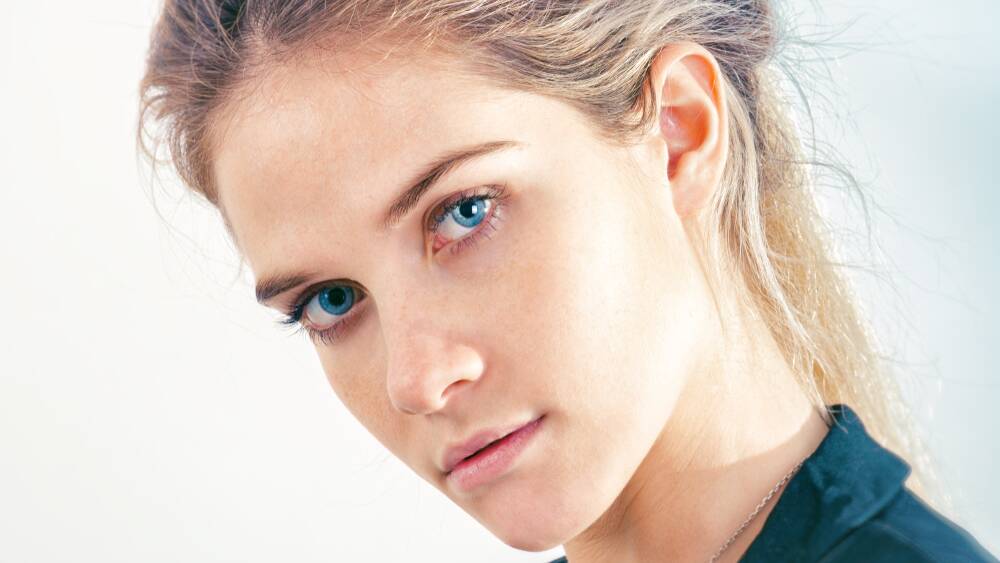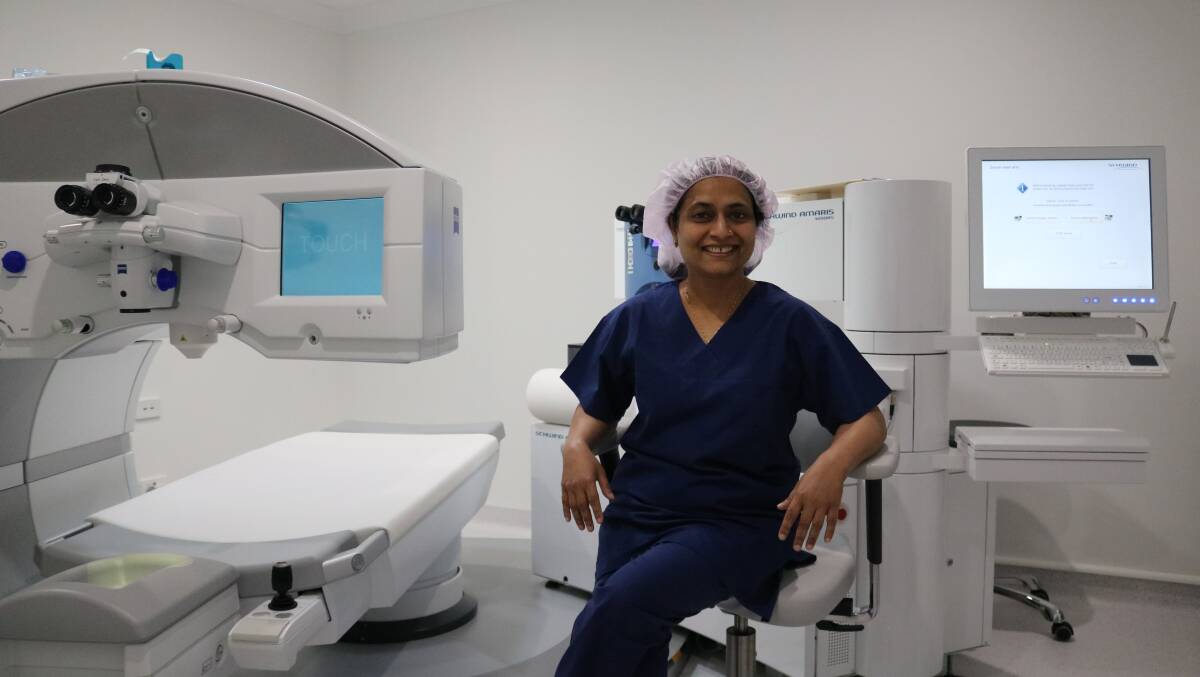Everything you ever wanted to know about laser eye surgery

This article is sponsored by Wollongong Refractive Laser Eye Institute
When it comes down to it, there’s little more precious in life than our eyesight.
That our sight gives us the ability to take in the full splendour of the world, rich in colour and detail, is perhaps less appreciated by those who enjoy 20/20 vision unaided by glasses or lenses.
But for those among us who know the discomfort of putting a contact lens on your eyeball, or the irritation of realising you’ve left your glasses behind, perfect eyesight can feel like something we just didn’t luck out with in life.
We feel resigned to our fate and constrained by our limitations. Travelling off the beaten track is difficult, forgetting to replenish contact lenses is a huge hassle, or we are faced with the choice of either seeing properly or wearing our sunglasses.
Laser eye surgery is something most people with poor eyesight have considered. But the idea can be intimidating. What if it goes wrong? Does it hurt? Am I awake? How long until my eyesight comes back? How much does it cost?
We spoke to Associate Professor Smita Agarwal at Wollongong Refractive Laser Eye Institute who gave us the full rundown on everything you need to know when it comes to laser eye surgery.
What are the types of laser eye surgeries, Dr Agarwal?
We do Lasik, PRK and SMILE.
Lasik and PRK are types of refractive surgery for the correction of myopia (which just means nearsightedness), hyperopia (which just means farsightedness) and astigmatism.
In Lasik, a hinged flap is created in the middle layer of the cornea. Then the corneal layers are reshaped with the laser. In PRK, no flap is created. Instead, the outer surface of your cornea – the “epithelium” – is removed.
SMILE (or small incision lenticule extraction) is the latest generation of vision correction. It’s a bladeless, one-step, one-laser procedure. A three-millimetre opening is created in the cornea and a precise amount of corneal tissue is removed to correct the person’s vision.
But your doctor will assess your eyesight and let you know which one is the ideal procedure for you. At Wollongong Refractive Laser Eye Institute, we conduct thorough examinations and testing to determine our advice which is tailored for you. It’s really important to us that you feel you have all the options and information you need.
So how long does the actual surgery take?
At Wollongong Refractive Laser Eye Institute, we have one of the best and fastest lasers on the market. In most cases, it takes only a few minutes to do the actual laser surgery, which surprises a lot of people. You’re awake while the surgery takes place, but you’re under a local anaesthesia, so you won’t feel a thing during the surgery. There is also the specialist doctor and other people around you to keep you calm and your eyes moisturised.
But how long it takes for a particular person depends on the amount of refractive error. You’ll be there for a couple of hours on the day, getting prepared and also to receive the post-operative checks. We like to make sure every single thing is covered and ticked off so the experience is a positive and thorough one for you.
What is the recovery period like? What can you do or not do during this time?
With Lasik, most patients achieve good vision the next day but with PRK and SMILE it may take up to 2-3 weeks for vision to settle down completely.
Recovery period for Lasik is painless and fast, although some people can experience a sensation of gritty and dry eyes, which is where eye drops come in handy. The recovery period for SMILE is slower – people’s eyesight could become a bit hazy for a few days.
Many people say from their experience that laser eye surgery is the best thing they have ever done.
The recovery period for PRK takes a little longer and can be a little bit uncomfortable. It generally takes about 2-3 weeks for your eyes to correct fully, depending on the amount of refractive error. But when the eyesight recovers, most people realise that not needing glasses or contacts is a wonderful, truly life-changing development.
People should avoid swimming, rubbing their eyes, playing contact sports and wearing eye makeup for around two weeks as your eyes will still be recovering, even if your eyesight is perfect. Good quality polarised sunglasses during this time are very handy – they provide a nice layer of comfort and protection for your eyes.
Are there any side effects?
People can experience blurred vision, dry eyes, red eyes, glare/starbursting and, rarely, infection, but the majority of people don’t experience any long-term side effects. Worldwide, over 16 million people have had Lasik and one million have had the newer more technically advanced procedure, SMILE.
At Wollongong Refractive Laser Eye Institute, we conduct high precision laser eye surgeries restoring perfect vision for people who never thought they’d be able to see unassisted by glasses or lenses.
Testing people’s eyes in the follow-up appointment and watching them read the smallest line is truly a wonderful moment – for me and of course for them!
How often does laser eye surgery go wrong or not work? What happens then?
In a small number of patients. If there’s under-correction, enhancement is needed, but this happens in less than 5 percent of surgeries.
A recent review looked at 97 of the best-designed LASIK studies worldwide, which included 67,893 LASIK-treated eyes, and found that less than 1 percent had worse sight after surgery.
What sort of advice would you give someone who is thinking about having laser eye surgery?
Choose your place of surgery very carefully and ensure you have a proper initial assessment where you can ask questions and share concerns with your specialist doctor.
Trust is an important part of you having a good experience with your surgery, so make sure you feel your specialist doctor listens to you and that you follow the simple instructions they lay out for you before and after your surgery.
At Wollongong Refractive Laser Eye Institute, we make sure we take the time to explore every possible angle with people because we want them to feel confident and excited about the procedure, not nervous and unprepared.
How much does it cost?
All procedures have different costs, so it really depends on what sort of surgery fits your eyesight issues.
You can’t claim on Medicare for the procedure as it is elective, but some health funds and Medicare will give a rebate from your consultation.
Also, Wollongong Refractive Laser Eye Institute facilitates third party payment plans, allowing you to pay off your surgery on a time-frame that suits you. That works really well for people who want to enjoy the benefits of the surgery now and space out the payments over a longer period.
Overall we aim to make laser eye surgery a really positive experience for people. It shouldn’t be scary – many people post-results say laser eye surgery is the best thing they have ever done.
The freedom to see without glasses or contact lenses is a life-altering experience and I’m very glad I get to create it for people!
Doctor Spotlight: Associate Professor Smita Agarwal

Dr Smita Agarwal is a Clinical Associate Professor at the Graduate Medicine, University of Wollongong and a comprehensive ophthalmologist living and working on the sunny south coast of NSW. She’s the Head of Ophthalmology Department at Wollongong and Shellharbour Public Hospitals in NSW. She’s also a senior lecturer at the University of Sydney.
Smita is passionate about restoring sight to those in less-privileged countries and is an active member of many charities and foundations that facilitate impactful charitable work in eyesight. Her last such visit was to Cambodia in September 2018.
Smita has completed thousands of successful eye surgeries in her long career and yet still finds remarkable satisfaction in every one of them on daily basis.
This article is sponsored by Wollongong Refractive Laser Eye Institute


